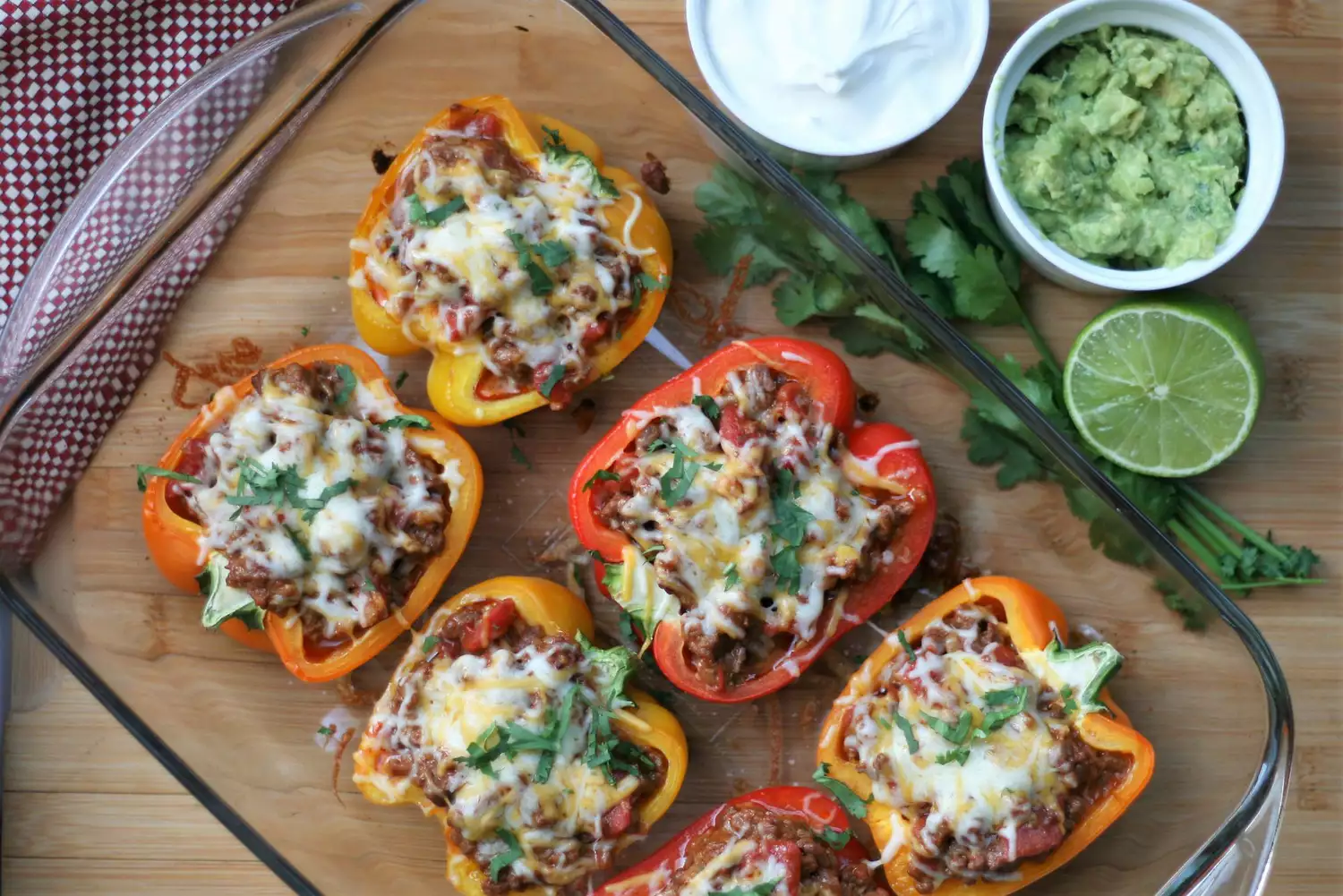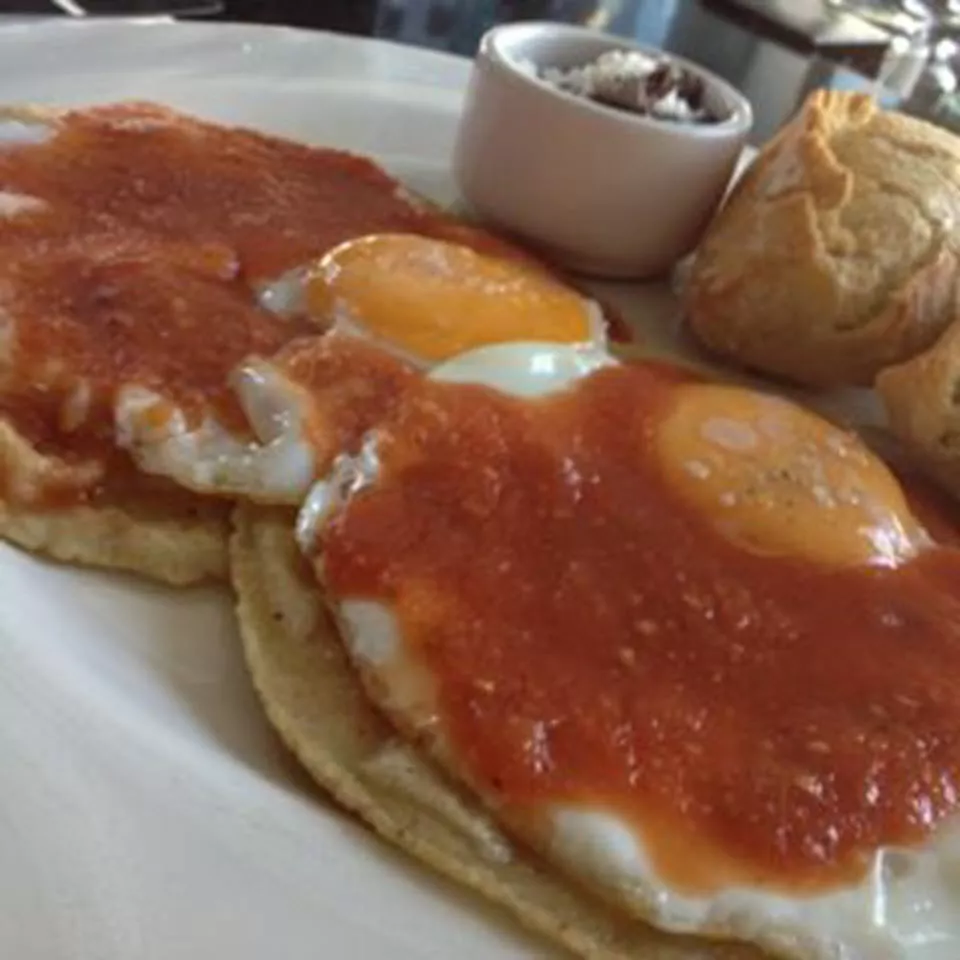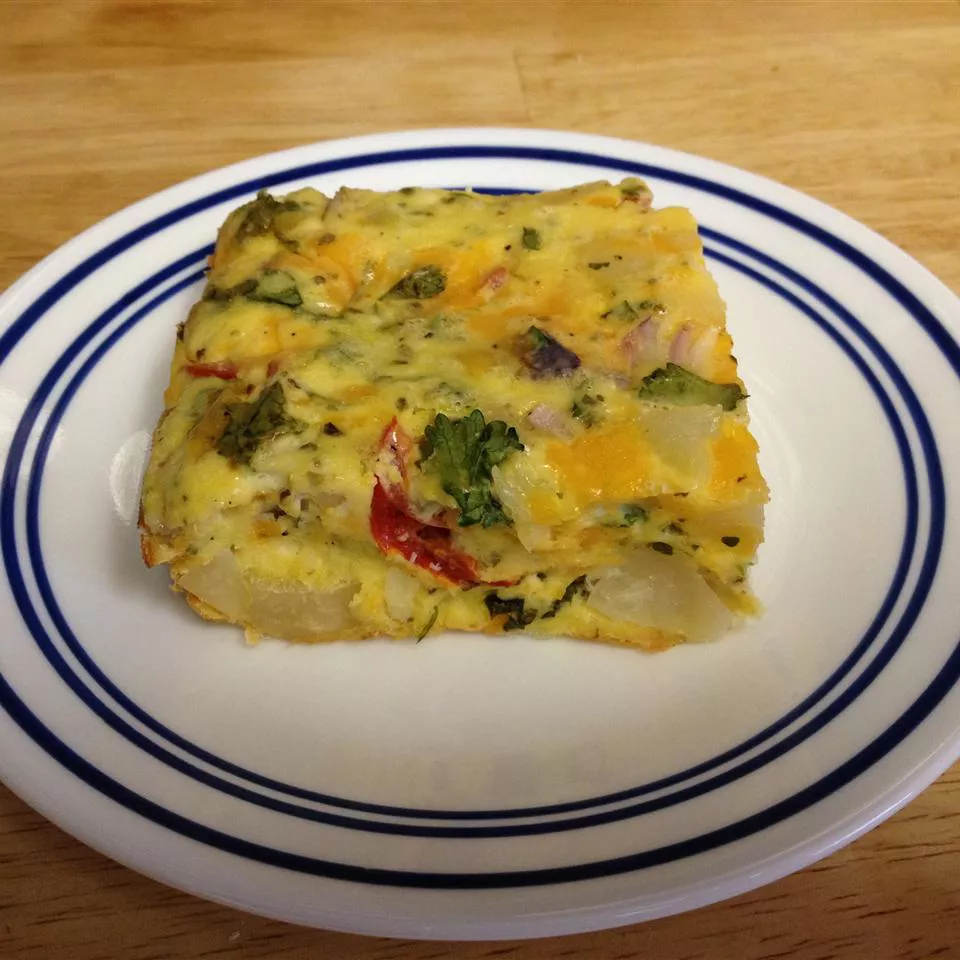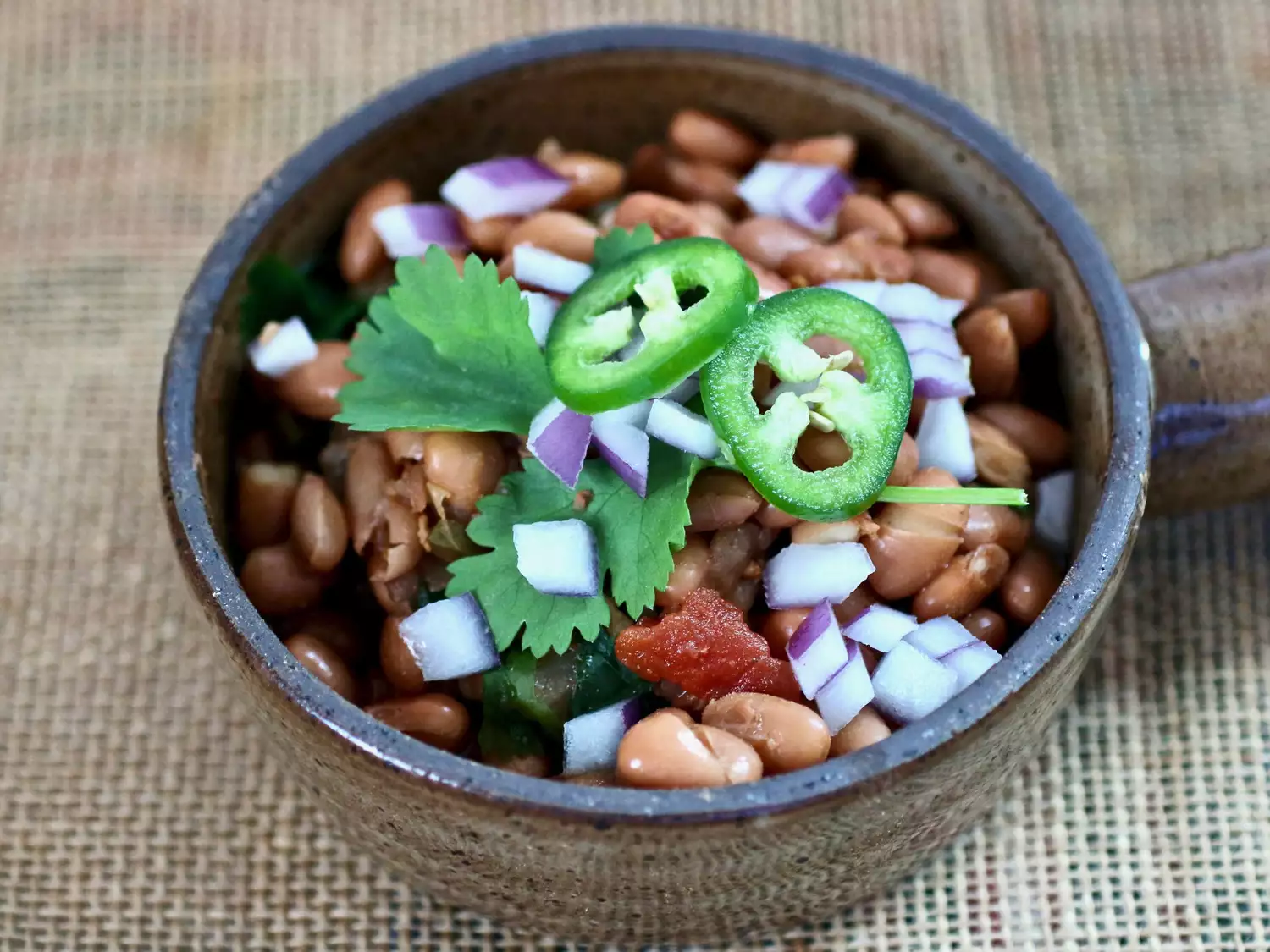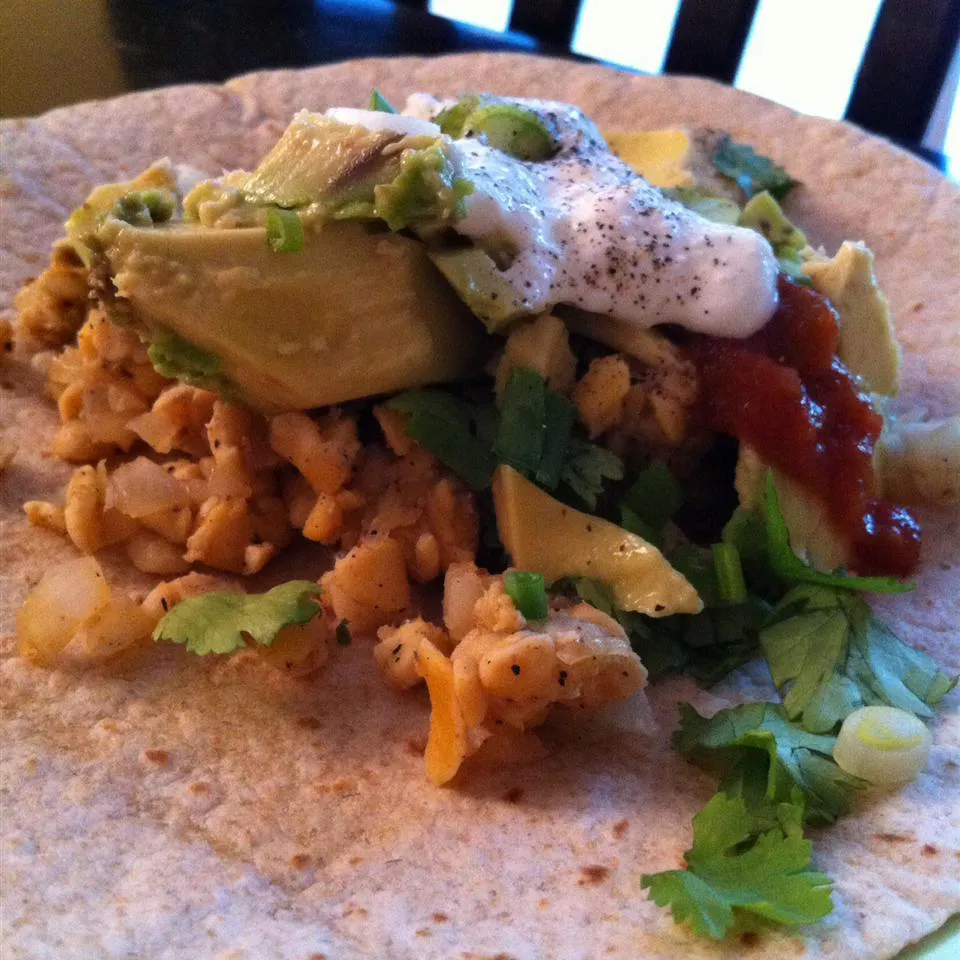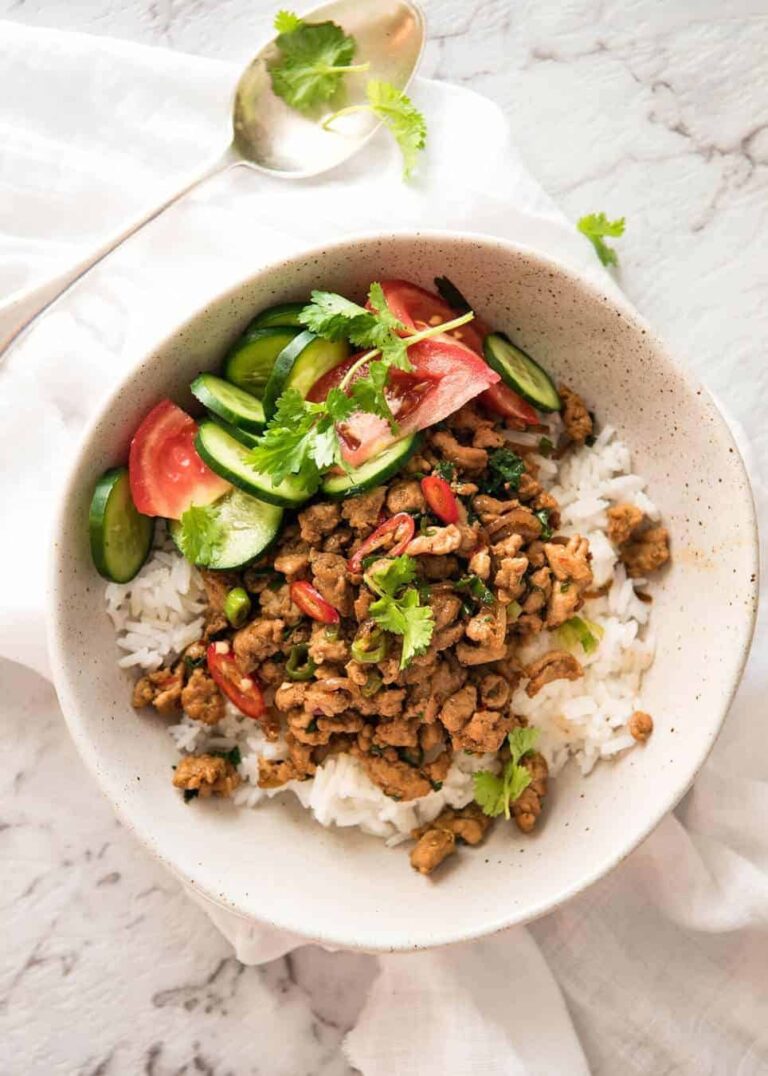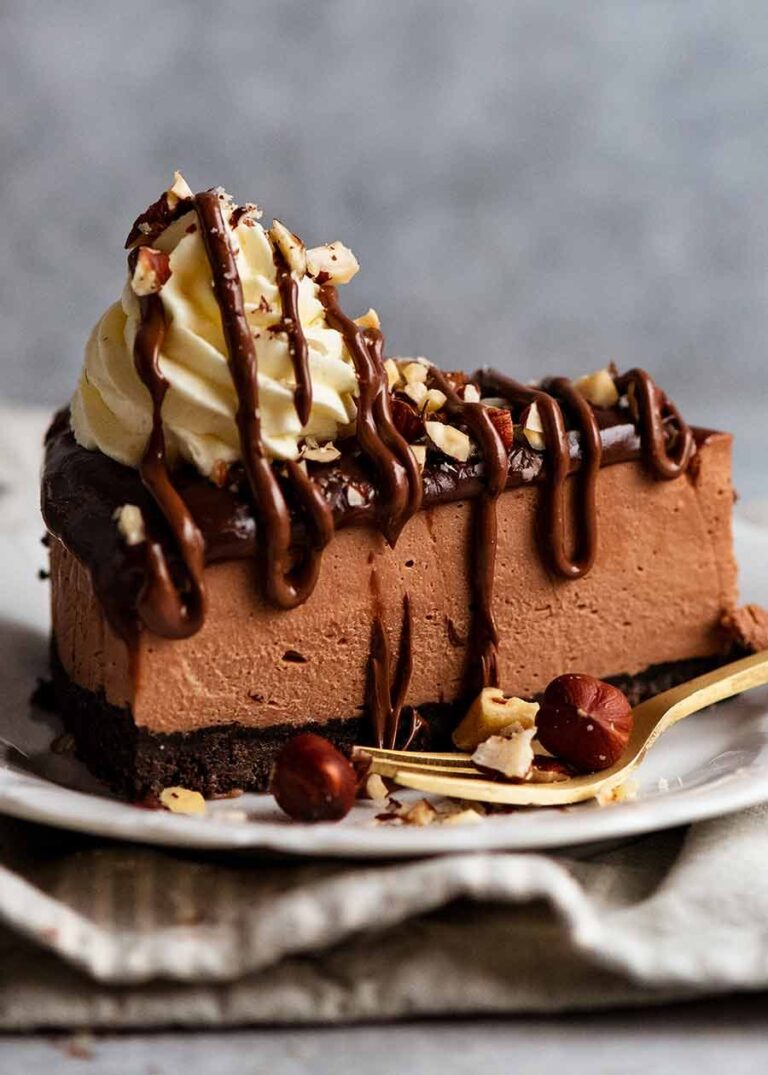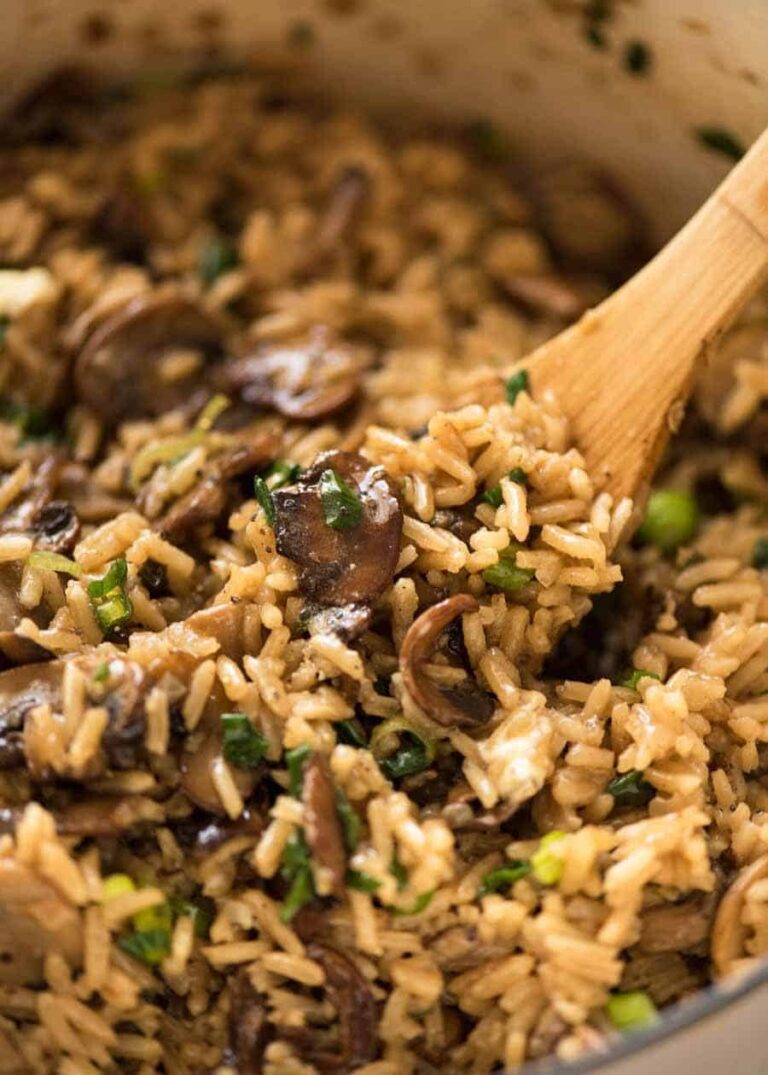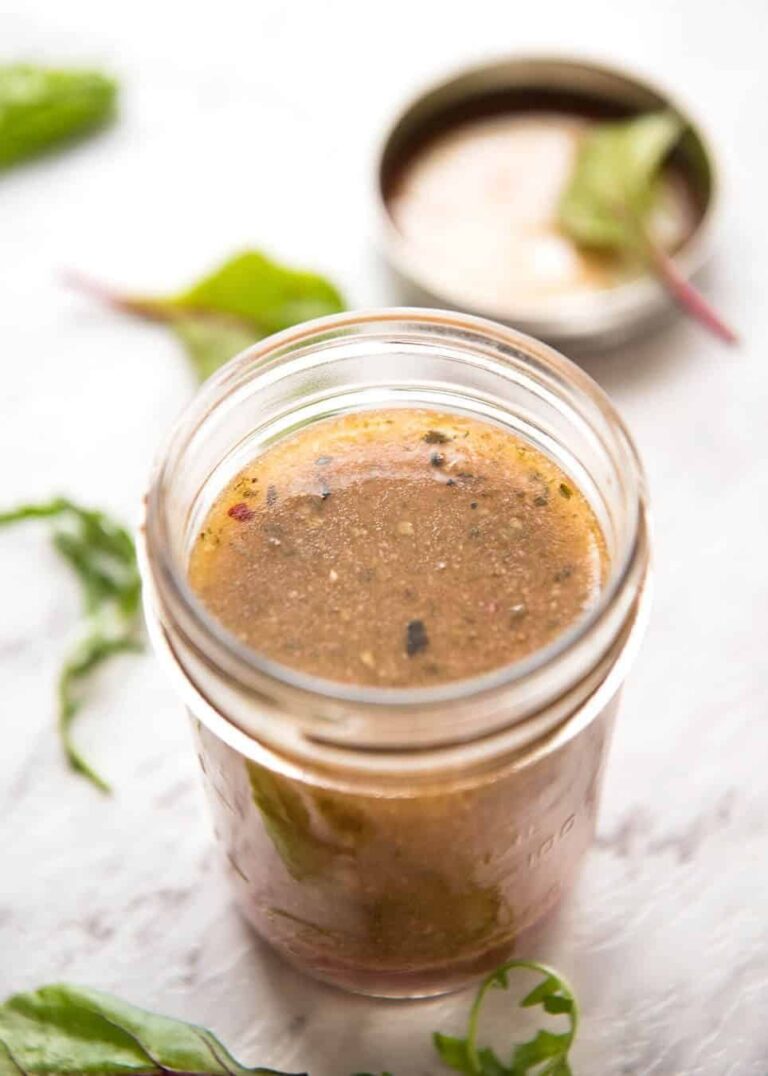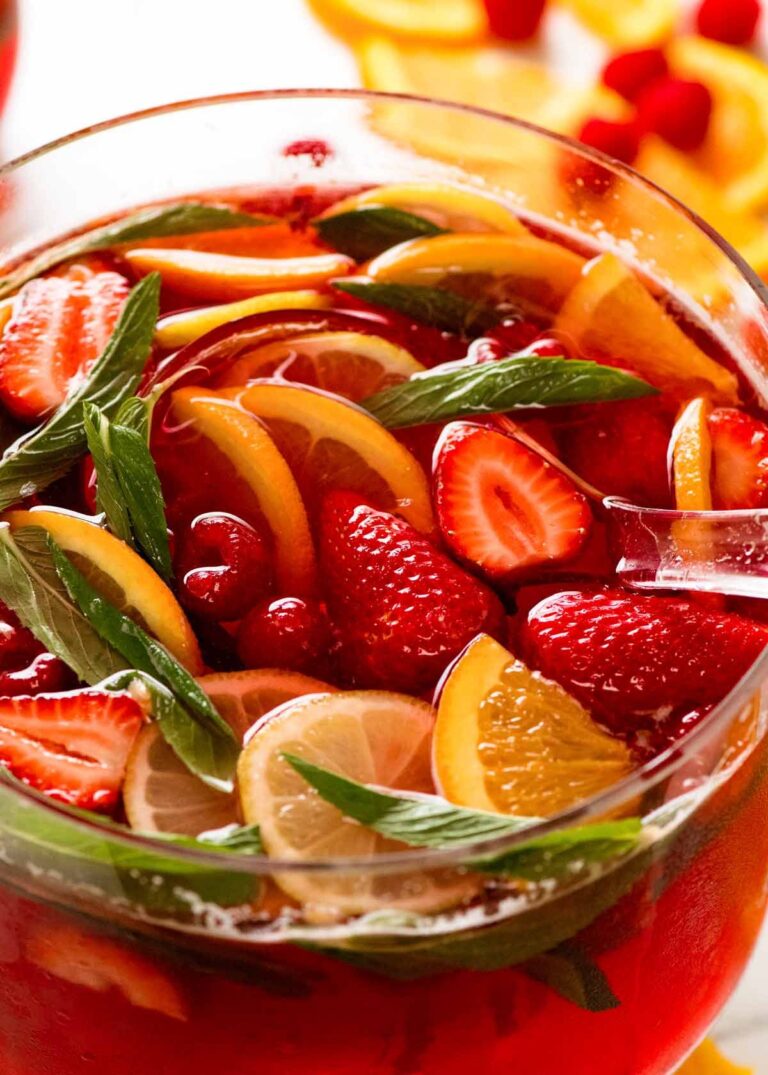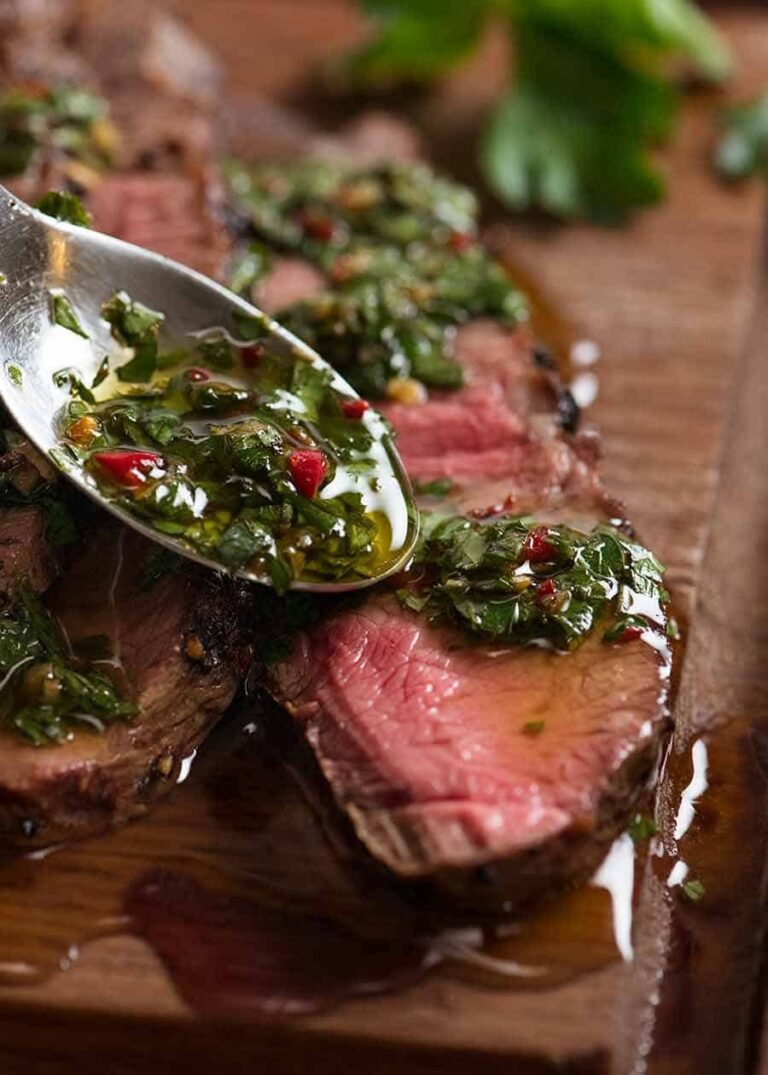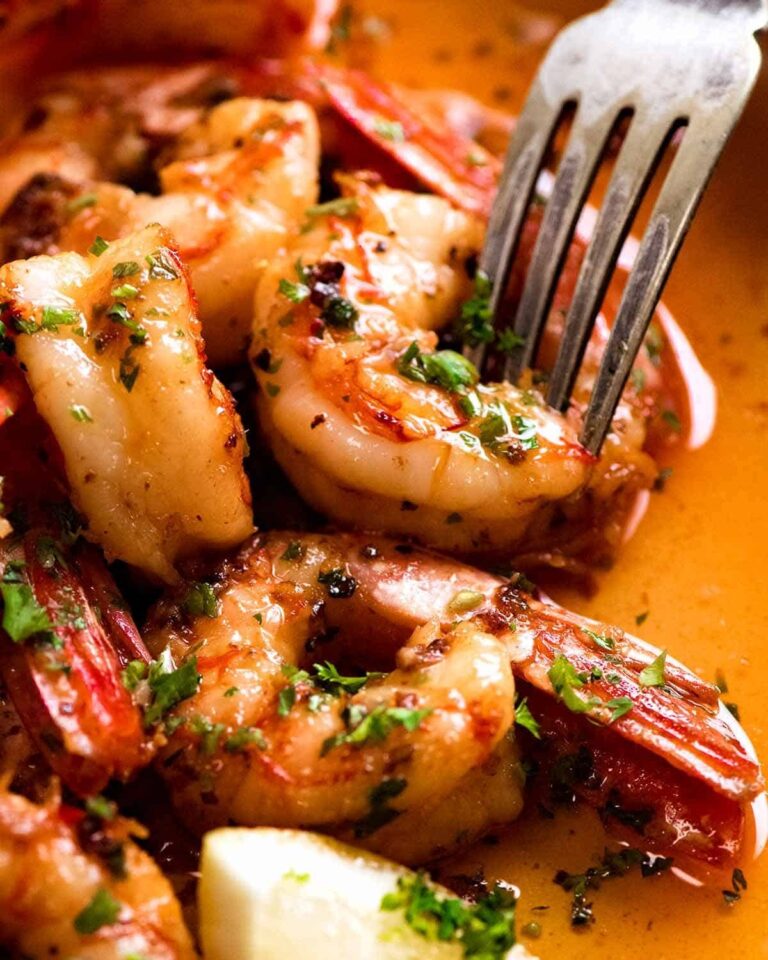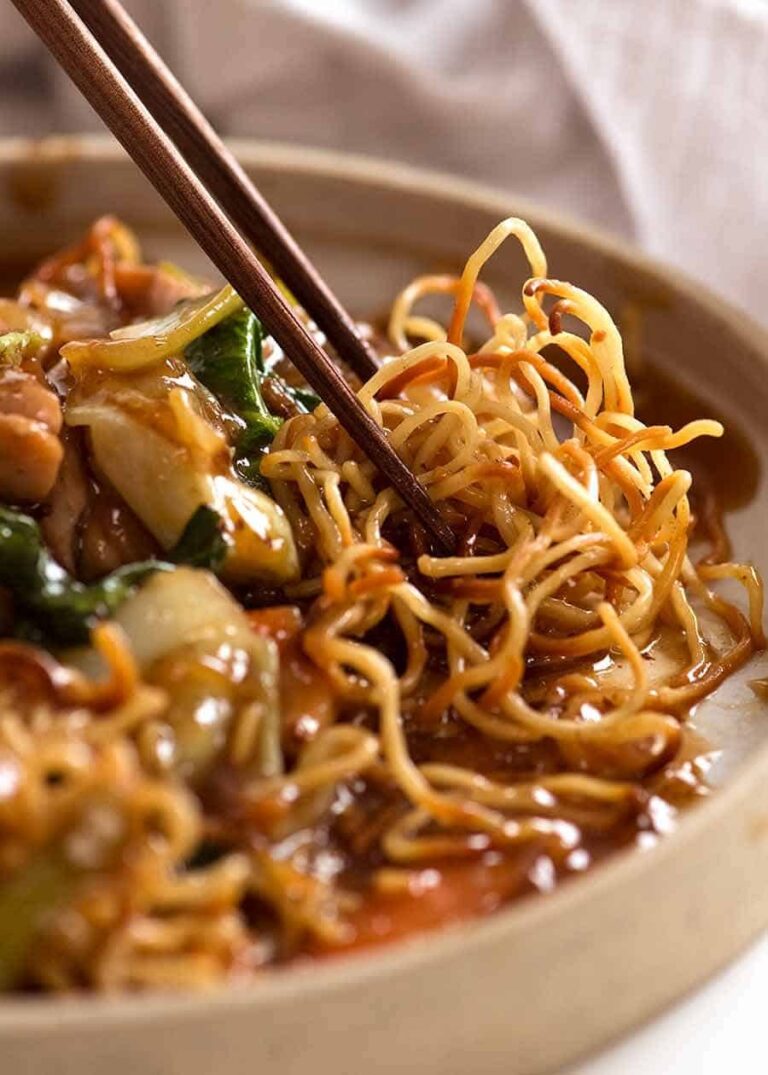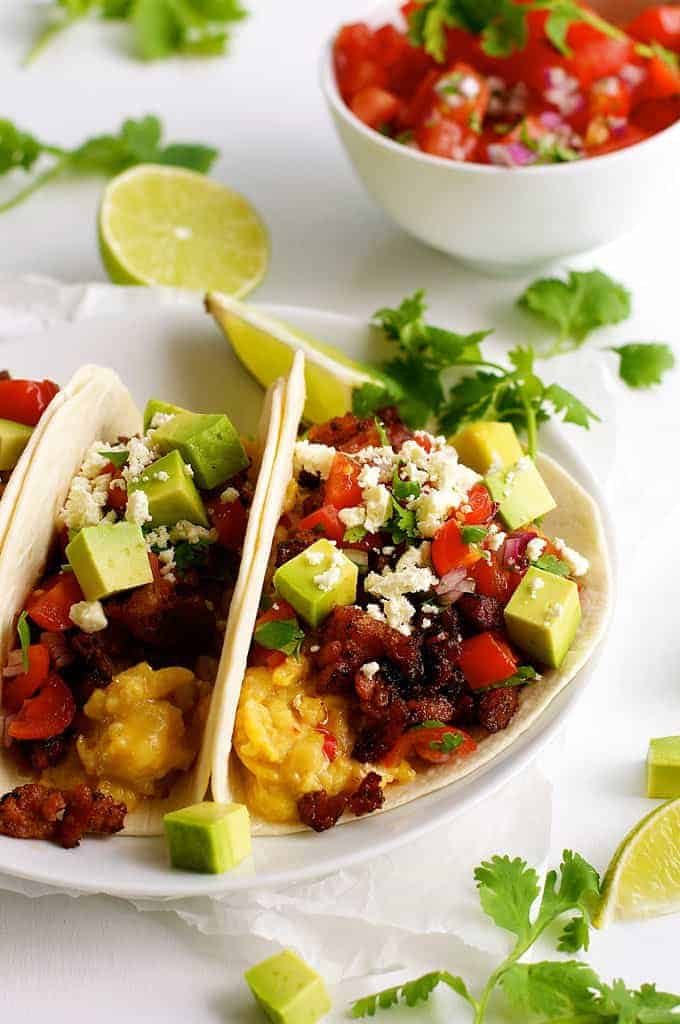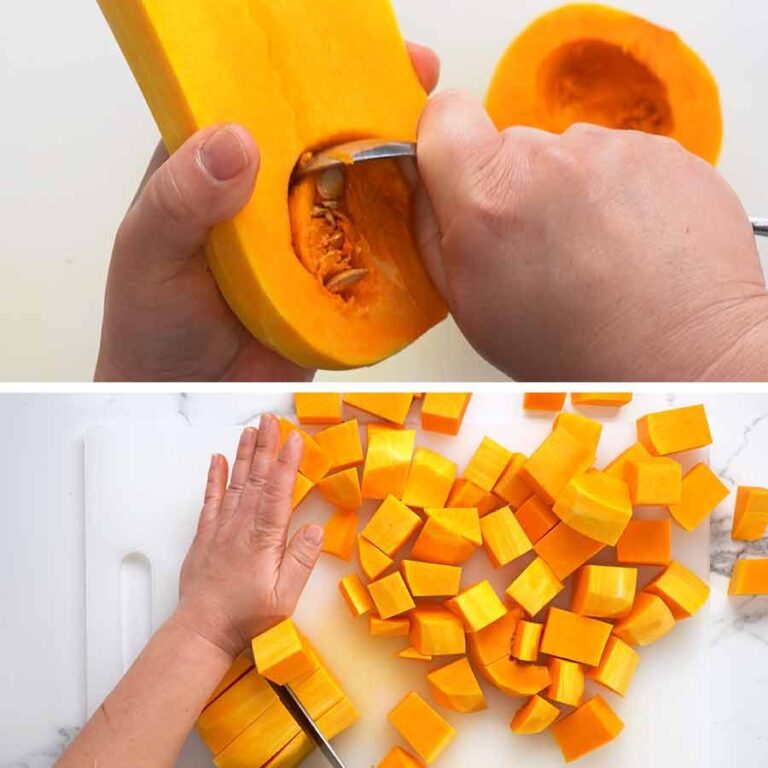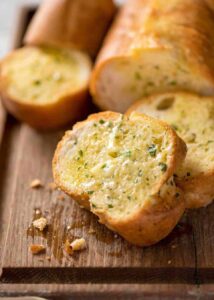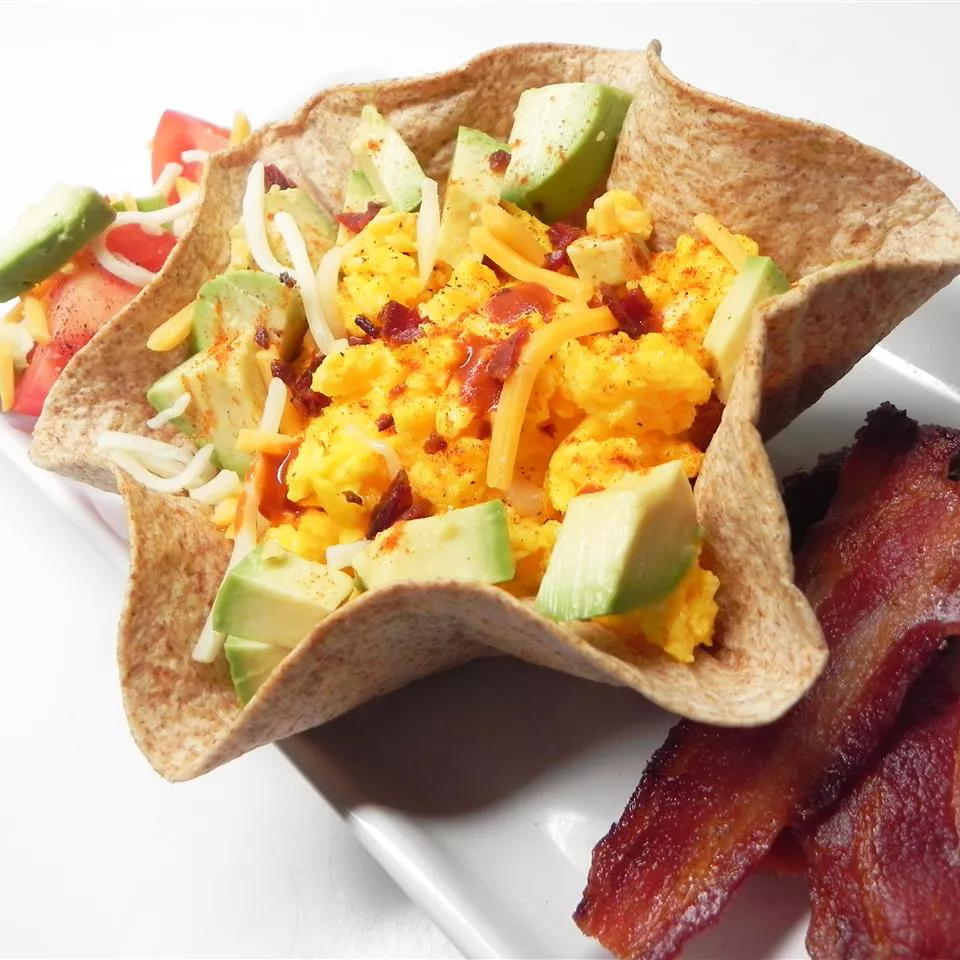
Ceviche Recipe
Ceviche is the well-known dish from Latin America the place recent fish and different seafood is “cooked” in lime juice and blended with chilli, coriander/cilantro, onion and different flavourings. Often known as cebiche, seviche or sebiche, this fast and simple recipe makes an exquisite gentle meal for decent summer time days, or a chic starter.
The one factor that makes this ceviche recipe stand out from the remainder is that it’s not too bitter. Limes in South America aren’t as bitter as ours!
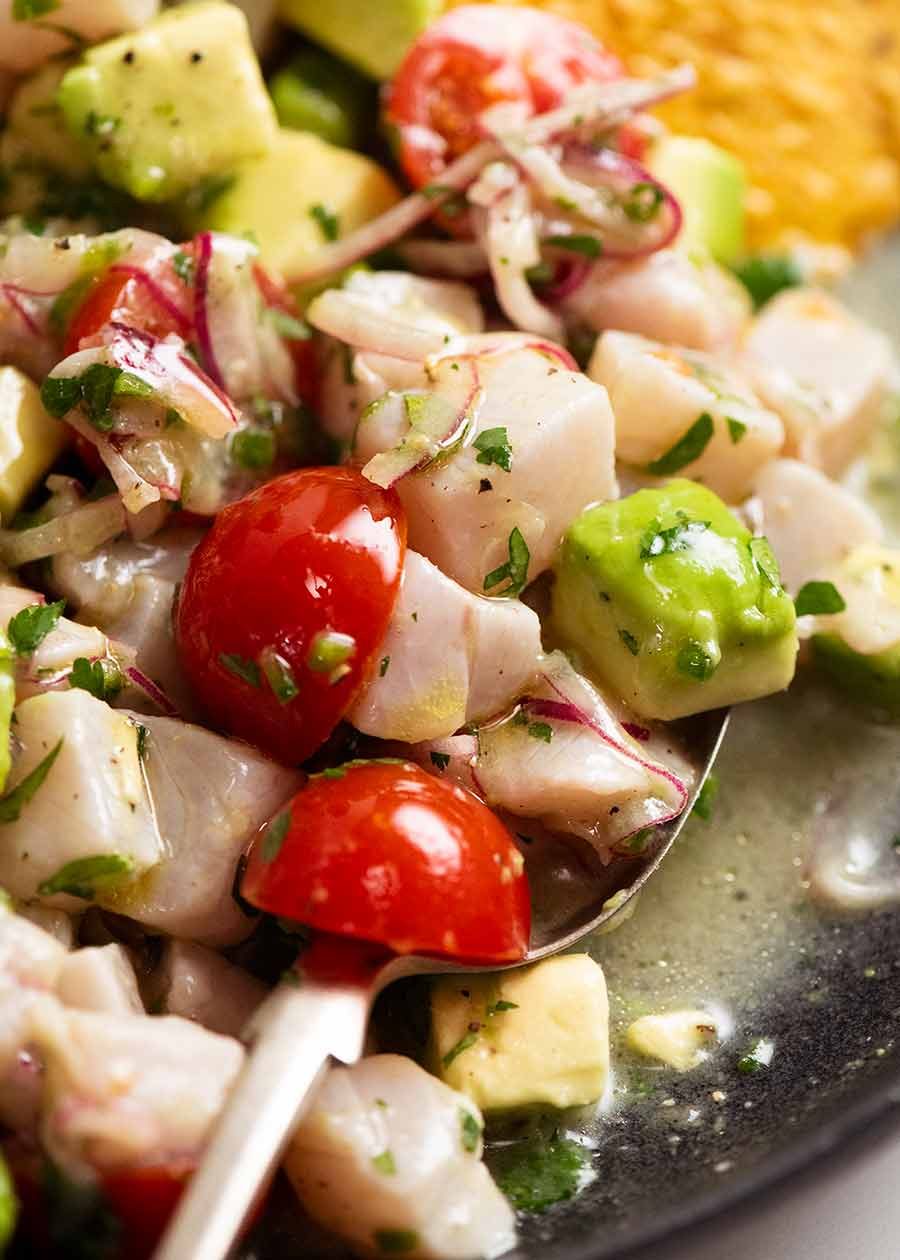
Originating from the west coast of South America, in the present day ceviche may be present in varied types from Mexico right down to Peru and past. It’s additionally a dish that has been embraced by fantastic eating institutions all over the world. It plates up elegantly and is a perfect gentle seafood starter to precede a richer primary.
Plus, it’s the form of dish that individuals don’t ordinarily consider as easy to make at residence, so eating places readily cost a small fortune for it.
I’m right here to bust that fable! So long as you may get your arms on glowing recent fish, ceviche is lifeless simple to make – and tremendous fast too!
Shopping for sashimi-grade fish appropriate for uncooked consumption is available as of late, making dishes like ceviche infinitely accessible for odd people like ourselves!
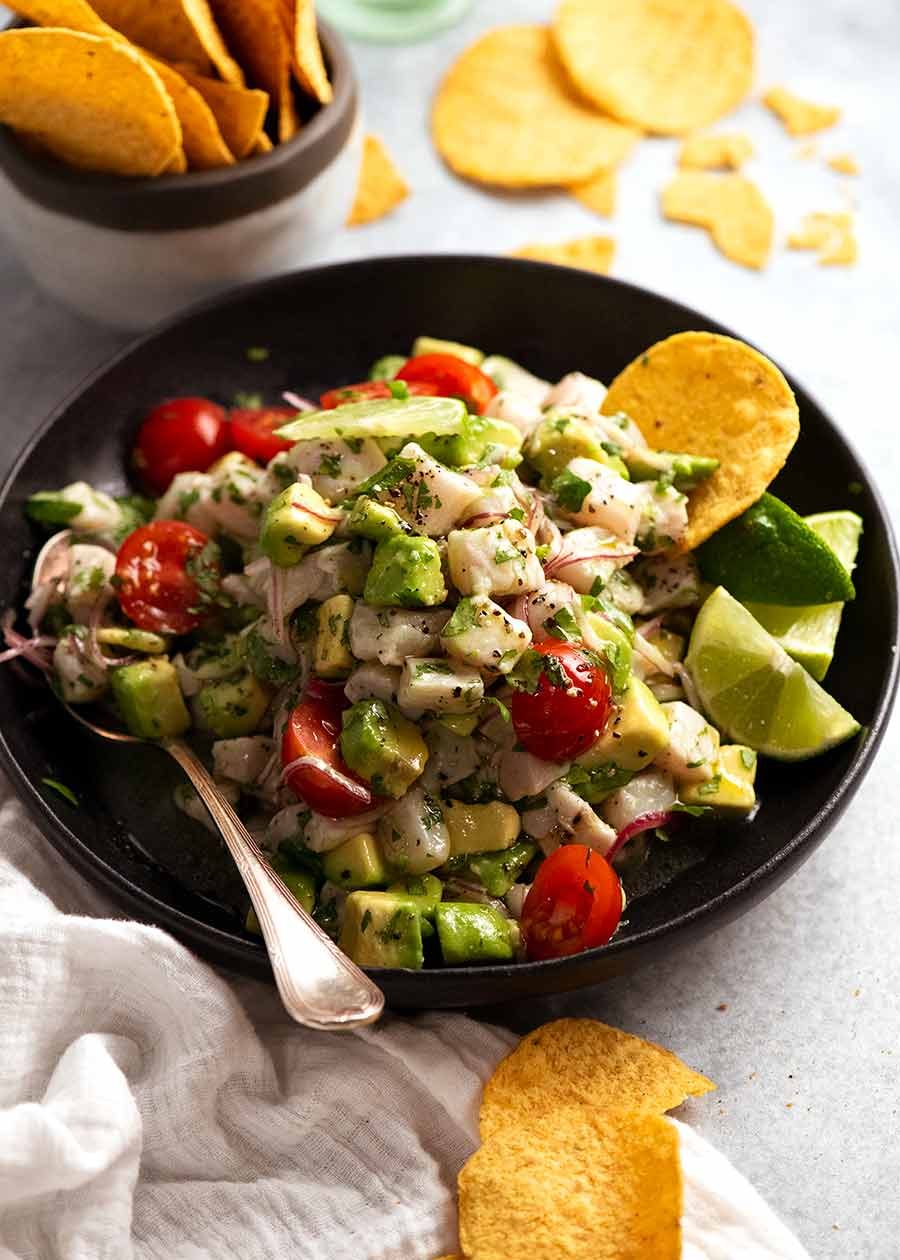
At its core, Ceviche is so simple as tossing uncooked fish with lime juice, then leaving it for five minutes to let the acid “prepare dinner” the fish, making it flip white on the floor, however nonetheless uncooked inside.
Right here’s a comparability of the fish instantly after tossing with lime (fish continues to be translucent), then 5 minutes later, it’s turned white as a result of it’s cooked!
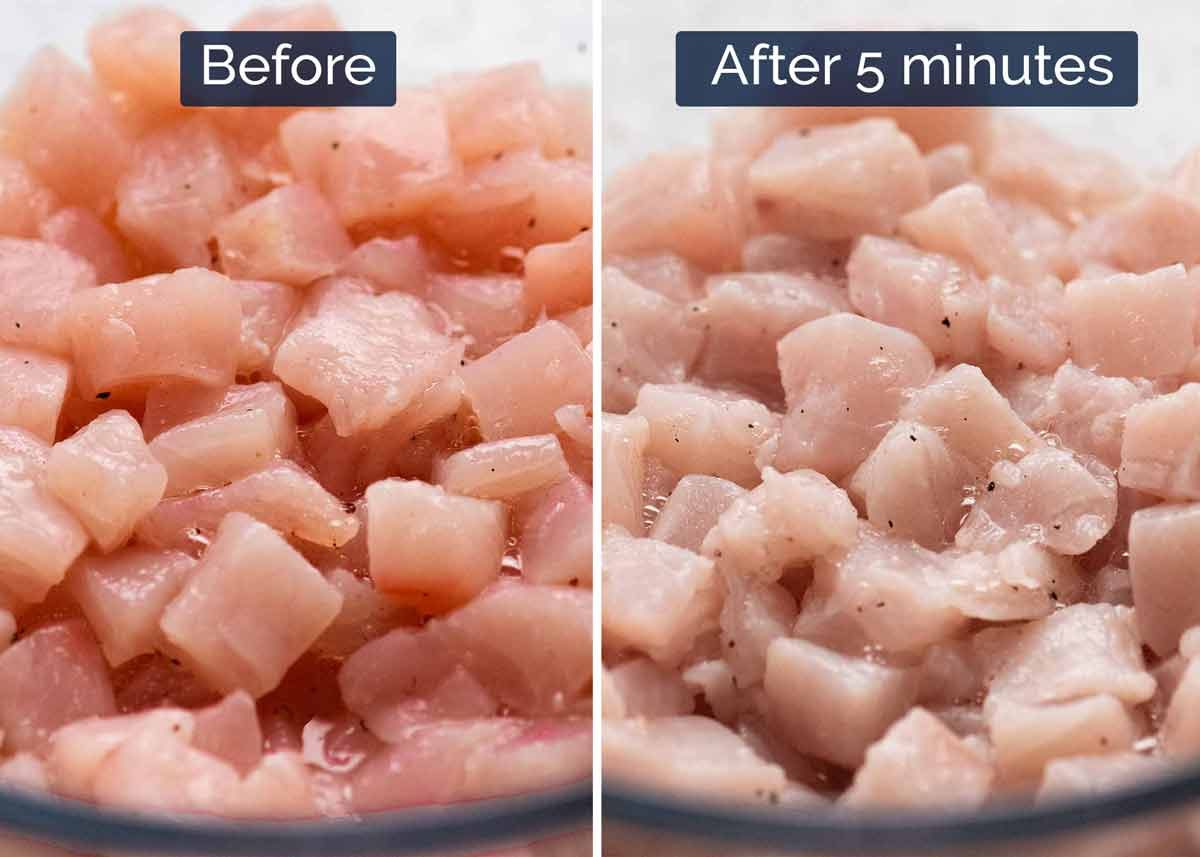
The ONLY fish you must use for ceviche is sashimi-grade fish that’s appropriate for uncooked consumption. It isn’t sufficient to simply purchase “recent fish” from the shops – this solely means it’s thought-about usually “recent” from the fishmonger’s standpoint. It doesn’t imply it’s essentially recent sufficient to eat uncooked. You should examine with the fish monger that it’s “sashimi grade” (often will probably be helpfuly labelled 🙂 ) and is protected it eat uncooked.
I do know that the considered consuming uncooked fish from the fishmonger versus at a restaurant may make some folks nervous, however meals security requirements these days right here in Australia are such that you just shouldn’t have trigger for concern. I’ve been consuming store-bought uncooked fish all my life because it grew to become obtainable within the late 90’s and I’ve by no means had an issue.
After all, when you occur to have a fisherman buddy, you need to use just about any freshly-caught fish – it’s all sashimi-grade! As a baby, earlier than sashimi was broadly consumed in Australia, my mother and father would take us fishing each weekend simply so we may catch recent fish for sushi!
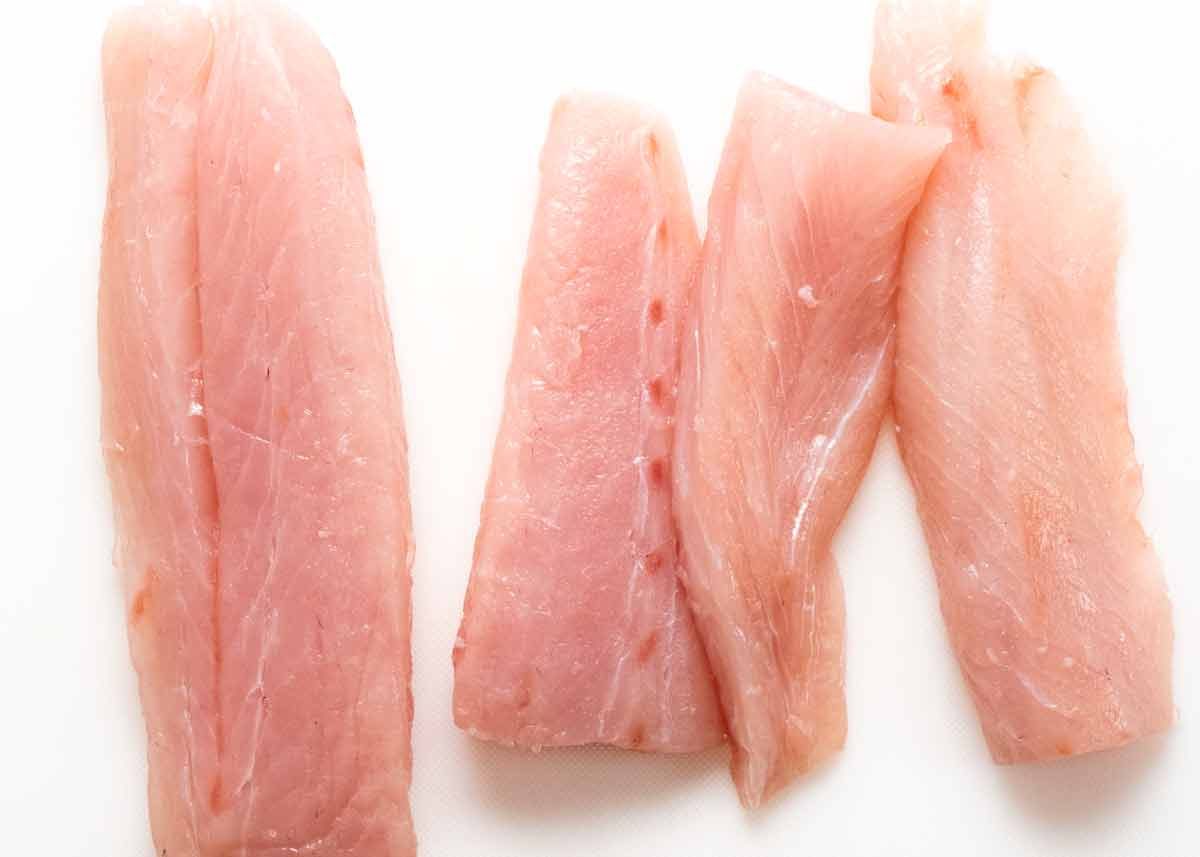
There isn’t a one strategy to make ceviche, and there’s no single “finest fish” for ceviche as a result of it’s pushed by the forms of seafood obtainable in numerous areas! There’s loads of choices, so I’m going to checklist the most typical ones for you:
-
Kingfish (pictured above) – prized for it’s tender white flesh, very fashionable in Japanese sashimi (reveals how good this fish is!). That is one among 3 widespread sashimi-grade fish bought at Australian fish outlets (together with salmon and tuna) and a preferred alternative of fantastic eating institutions;
-
Sea bass – historically used for Peruvian Ceviche and simply discovered within the UK/US;
-
Tuna – in style in Mexico (together with prawn/shrimp);
-
Mackerel – additionally in style in Mexico;
-
Prawns / shrimp – conventional in Ecuador and in style in Mexico, usually with a splash of tomato juice;
-
Halibut or Patagonian tooth fish – Chile;
-
Salmon – although not conventional (as a result of white fish is conventional), salmon is great made into ceviche. Simple to seek out in Australia;
-
Bream – many species, relying the place on the planet and broadly used;
-
Swordfish – in case you are fortunate sufficient to get it(!), that is utilized in some Latin American international locations.
-
Trevally – Though we haven’t seen it talked about, uncooked trevally is superbly soft-textured and would make a fantastic ceviche. Accessible at some good fishmongers right here in Australia; and
-
Cod and mahi mahi – Standard choices in America.
As a basic rule, fish which might be tender and never chewy when uncooked will make higher ceviche. It’s because the fish in ceviche is reduce chunkier in comparison with the fantastic slices utilized in say fish carpaccio or sushi. Thus fish like snapper, grouper, some cods, flounder, which may be typically a bit robust eaten uncooked, are much less appropriate.
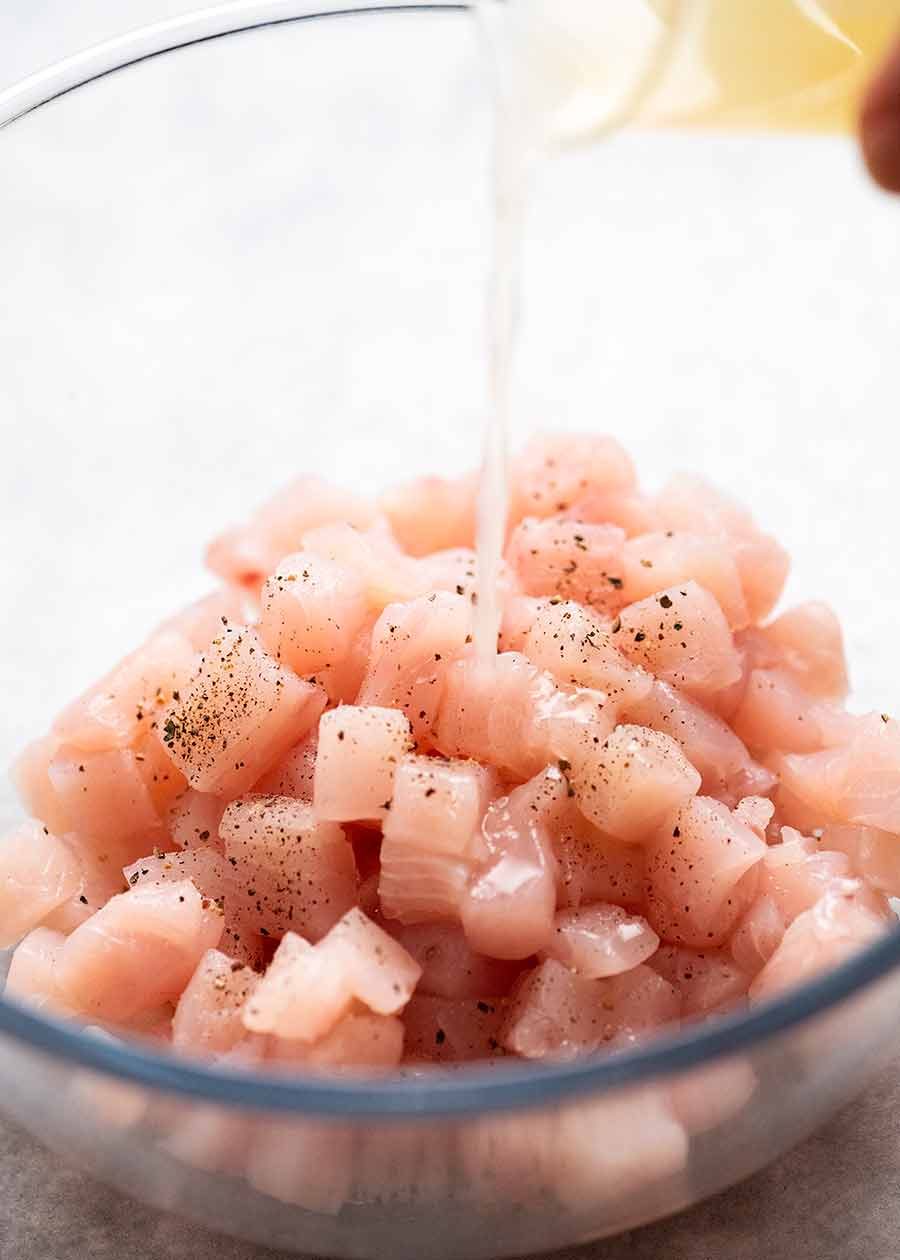
There’s nobody strategy to make ceviche. Every nation, metropolis, restaurant and family has their very own means. At its core, nevertheless, the avocado and jalapeño on this makes this a Mexican Ceviche.
Listed below are the opposite components required for this recipe:
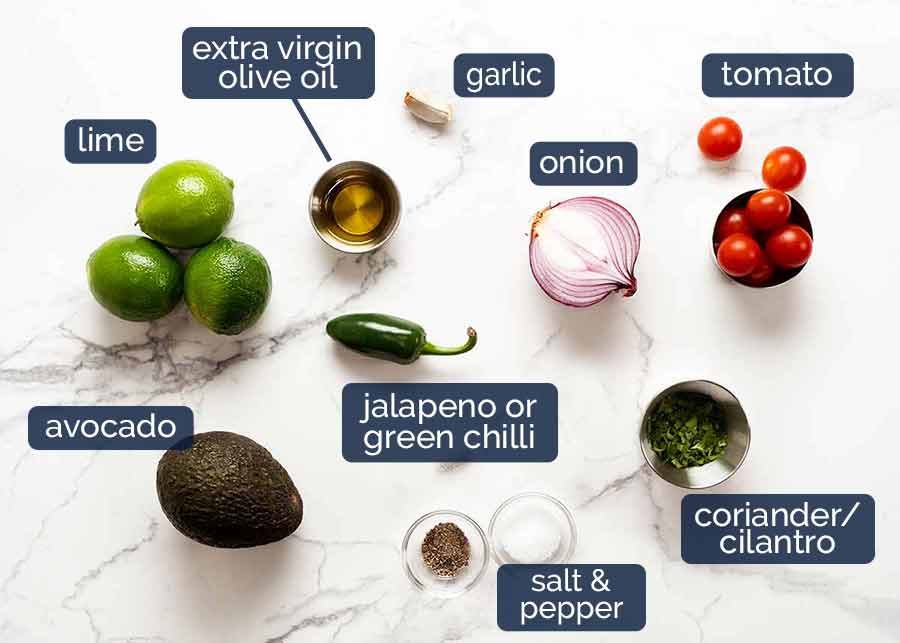
-
Limes – the important ingredient that “cooks” the fish;
-
Further virgin olive oil – only a contact will take the sharp, bitter edge off the in any other case completely bitter dish. It’s not strictly conventional to incorporate this, but it surely’s vital to know that limes in Latin America – definitely in Mexico – are sometimes not as bitter as these in most Western international locations, together with Australia and the US. With out oil, I discover Ceviche is simply too bitter. Even in Mexico, I discovered most Ceviches there to be too bitter! (*She geese as Mexicans throw rotten tomatoes at her!*)
-
Avocado and jalapeño – these add ins are conventional in some variations of Ceviche present in Mexico. Creamy items of avocado are a sensational pairing with the fragile items of fish!
-
Coriander/cilantro – important recent herb flavouring for ceviche. Coriander haters – sub with chives;
-
Crimson onion – very finely sliced so it flops and melds with the fish;
-
Garlic – crushed utilizing a garlic press so it’s minced finely and “juicy”. We simply use 1 small clove – it shouldn’t be overly garlicky; and
-
Tomato – included in some conventional variations, I actually love simply including a bit (not an excessive amount of) for stunning pops of color and recent juiciness.
The making half may be very easy, however I’ve discovered the secret’s the order wherein components are added – ie what’s marinated with the fish, and what’s finest added later.
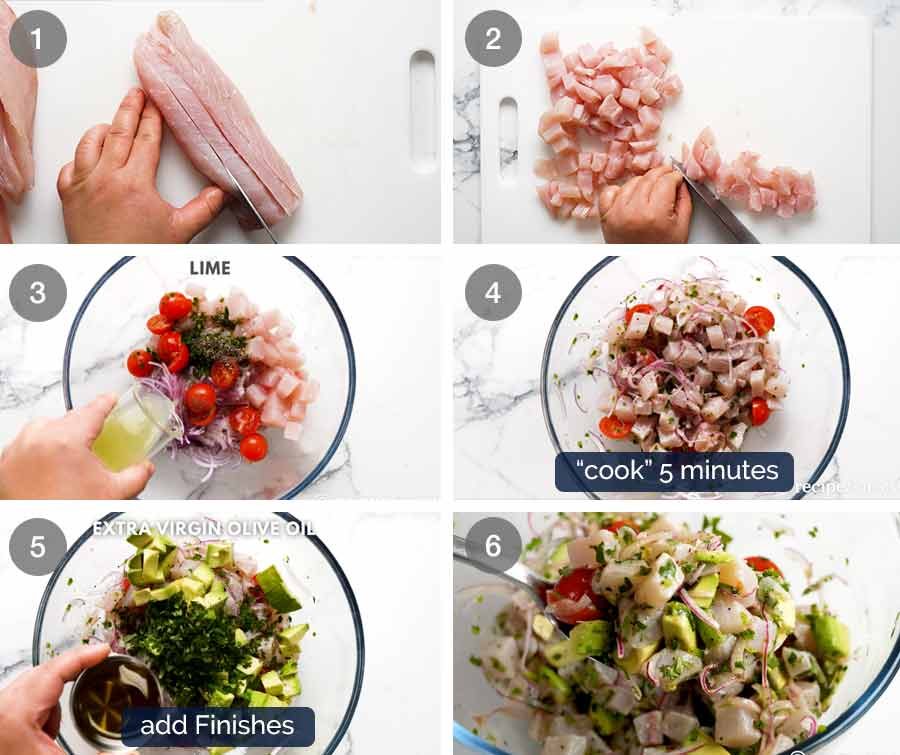
-
Fish – reduce the fish into lengthy strips;
-
Cube – then reduce it into small cubes;
-
Mix fish with tomato, onion, jalapeño, pepper and lime juice. Don’t add salt (this attracts water out of the fish), avocado (these get bashed round an excessive amount of when tossing) or olive oil (this dilutes the acidity of the lime juice and slows down the cooking an excessive amount of);
-
“Prepare dinner” 5 minutes – gently combine, then put aside for five minutes to let the lime “prepare dinner” the fish;
-
Add olive oil, avocado, recent herbs, salt then gently combine;
-
Serve instantly.
Regardless of what different recipes will inform you, there’s no should be in a manic rush to get the ceviche on the desk inside 10 seconds in any other case the lime will over prepare dinner the fish. Ceviche is definitely finest eaten recent, but it surely’s nonetheless fantastic 20 minutes later. It’s not till across the 30 minute mark that the fish turns into a bit too agency for my style (actually utterly cooked by way of – however not like range cooking so it’s not the most effective texture).
Notice: In some international locations (resembling Peru), ceviche is historically left to “prepare dinner” for a number of hours within the lime however bigger items of fish are used. I like utilizing small items – for higher texture and ease of consuming.
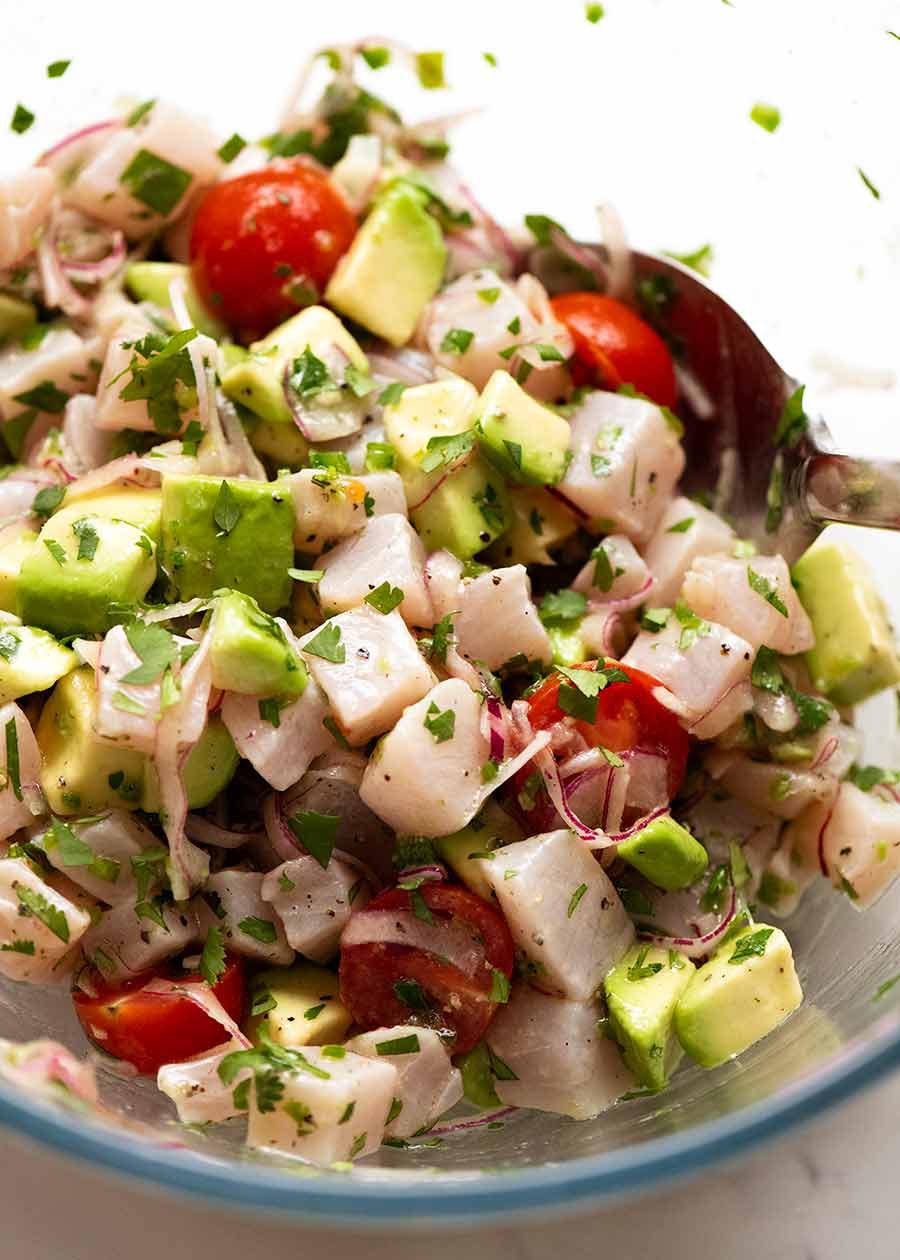
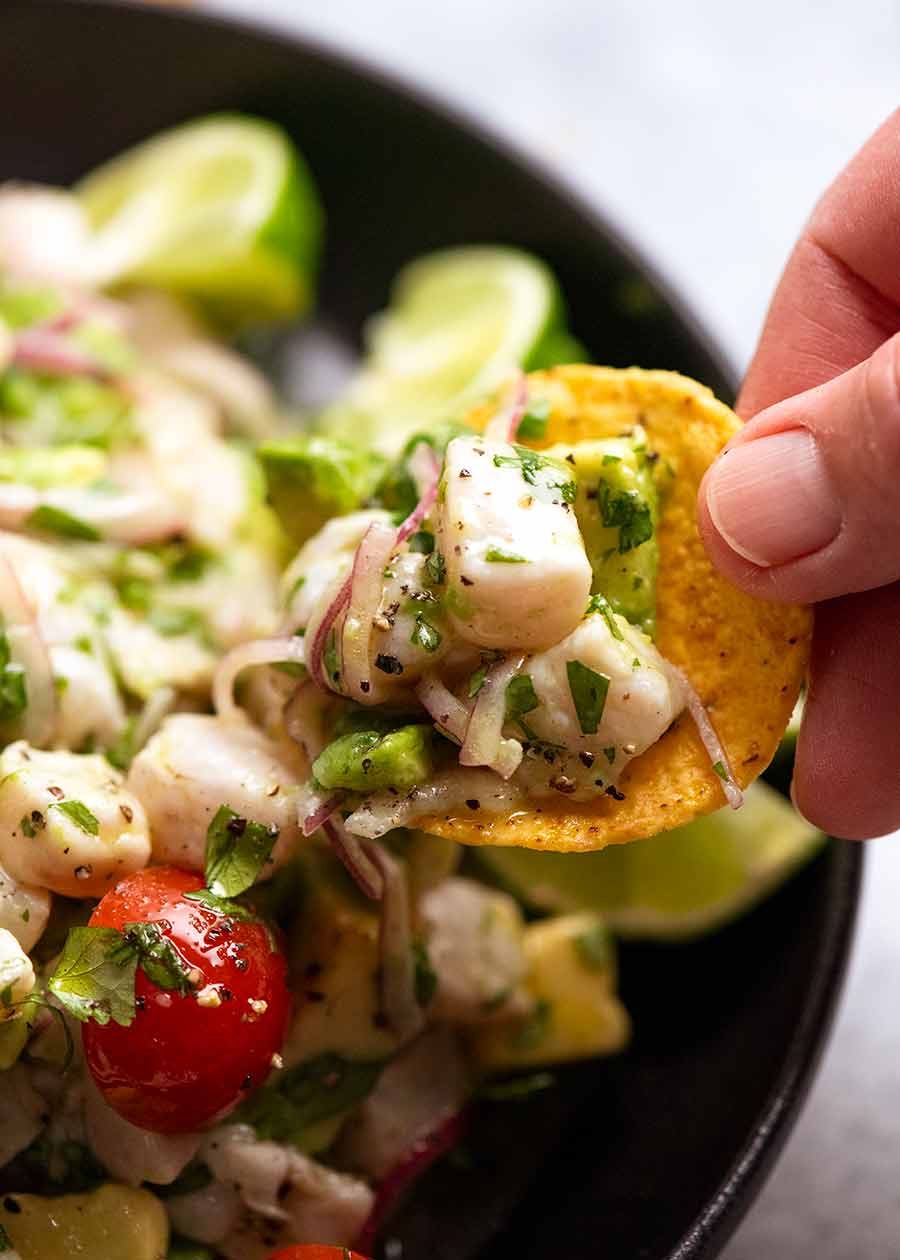
Simply as there isn’t a one strategy to make Ceviche, there are many methods to serve it too!
In Mexico and different components of Central America, it’s usually served in small “cups” or dishes , cocktail fashion, with corn chips or crispy tortillas/tostadas for scooping, as pictured above. I like utilizing this concept to make platters of canapés to move round at gatherings, as pictured on the beneath proper.
In Peru it’s served as a meal with corn on the cob, slices of cooked candy potato and typically with rice. In different international locations it comes with plantain chips or rice.
In fantastic eating eating places, it’s served in all kinds of fancy methods. One simple means is to spoon particular person parts right into a small dish with a facet of crostini on the facet (toasted small bread), as pictured beneath.
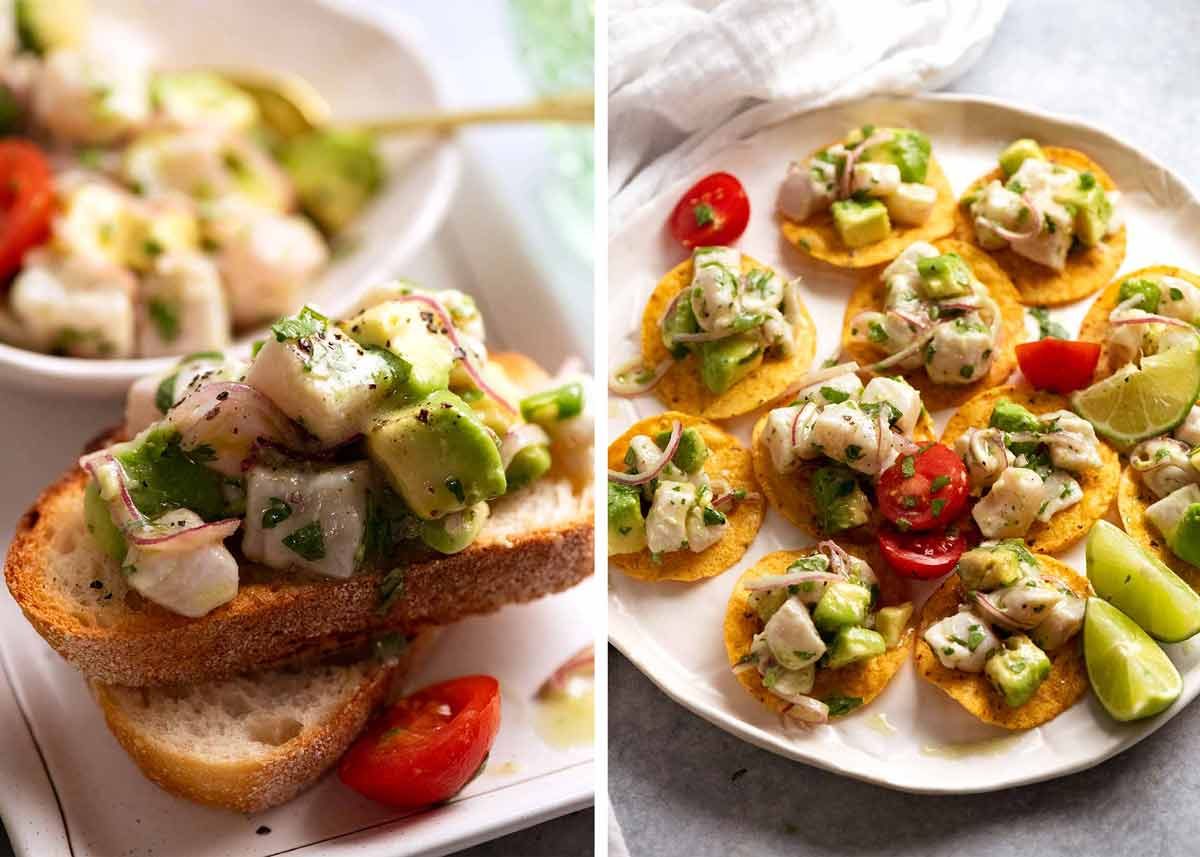
After all, you possibly can simply by-pass all of that and simply devour it straight out of the bowl with a spoon, which is precisely what I did. 🙂
I actually hope you give this a go someday. Particularly these of you who’ve beforehand been turned off by overly bitter ceviche prior to now.
Now – go make pals with some native fishermen! 😂 – Johnsat x

Ingredients
- 400g / 14 oz kingfish, tuna, sea bass or other sashimi-grade fish suitable for raw eating (Note 1)
- 1/4 red onion , very finely sliced using mandolin (so it "flops")
- 2 tsp fresh jalapeño , finely chopped (or green chilli) – add more or less for spiciness
- 8 cherry tomatoes , halved (large ones quartered)
- 1/4 tsp black pepper
- 1/3 cup lime juice , fresh (or lemon juice)
- 1/2 tsp salt , cooking / kosher (or 1/4 tsp table salt, Note 2)
- 1 avocado , ripe, cut into 1.25cm / 1/2″ cubes
- 1/4 cup coriander/cilantro leaves , roughly chopped (sub chives)
- 2 tbsp extra virgin olive oil (Note 3)
Instructions
- Cut fish: Cut fish into 1.25cm / 1/2" cubes.
- Toss in lime, leave 5 minutes: Place in a bowl with onion, jalapeño, tomato, pepper and lime juice. Gently toss, then set aside for 5 minutes, mixing gently once.
- Add avocado then serve! Sprinkle over salt, then add avocado, coriander and olive oil. Gently stir, then serve immediately with corn chips (see in post for other ideas).
- Ceviche will be good for 20 minutes or so, then fish will start to overcook and firm up. Do not leave overnight (for food safety reasons).
Notes
1. Raw fish – virtually any raw fish can be used for ceviche, as long as it’s “sashimi-grade” / “sushi grade” and therefore safe for eating raw. Fish simply labelled as “fresh” is not always sashimi-grade, it just means it considered generally “fresh” from the fishmonger’s standpoint. Always ask your fish monger, or ensure the fish is clearly labelled. Or make this with freshly caught fish!
Here is a non exhaustive list of some common and traditional fish varieties that are excellent for ceviche (see same list in post for more commentary on each):
Kingfish (pictured in post)- popular choice of fine dining establishments
Sea bass – traditional in Peruvian
Tuna and mackeral – popular in Mexico
Prawns / shrimp – traditional in Ecuador, popular in Mexico
Halibut or Patagonian tooth fish – Chile
Salmon – not traditional but excellent for ceviche
Bream – many species all around the world
Swordfish – used in some Latin American countries.
Trevally – not traditional in South America, but beautifully soft-textured and excellent for ceviche
Cod and mahi mahi – Popular options in America.
Not recommended: snapper, grouper, some cods, flounder, which can be sometimes a bit tough eaten raw, are less suitable.
2. Salt – table salt is finer than cooking/kosher salt so use less.
3. Extra virgin olive oil – while not traditional, I find ceviche with just lime juice too sour for my palette, noting that limes in Mexico and South America tend to be less sour than those in Western countries.
Common to use oil in fine dining establishments. It also adds a touch of luxury to this dish while still keeping it super fresh. It’s essential, in my books 🙂
4. Leftovers – not recommended to keep leftovers for food hygiene purposes.
5. Nutrition per serving, assuming 5 servings (Ceviche only).
